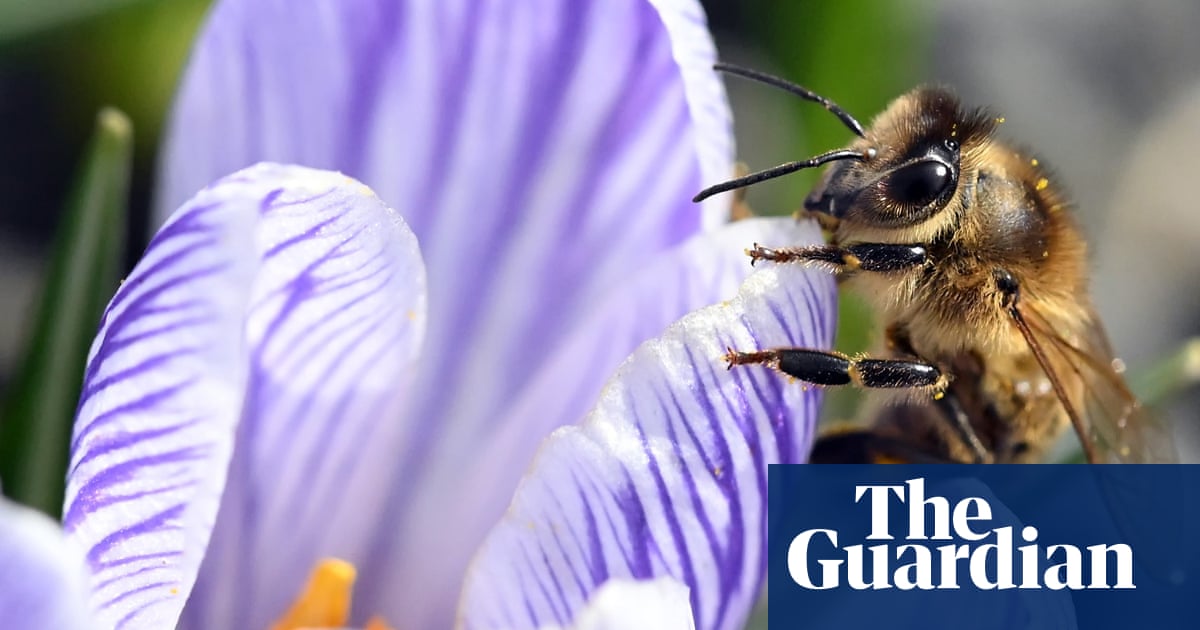Plants can “hear” bees buzzing and serve up more nectar when they are nearby, scientists have found.
The research suggests that plants are a more active partner than previously thought in their symbiotic relationship with pollinators. The behaviour could be a survival strategy that favours giving nectar and sugar to bees over so-called nectar robbers that do not offer plants any reproductive benefits.
“There is growing evidence that both insects and plants can sense and produce, or transmit, vibro-acoustic signals,” said Prof Francesca Barbero, a zoologist at the University of Turin, who led the research.
The findings add to the “truly astonishing” multitude of ways that plants can perceive their surroundings, including the presence of beneficial and harmful insects, temperature, drought and wind, Barbero added. In future, the team suggested, buzzing noises could be used on farms as an environmentally friendly way of enhancing the pollination of crops.
The scientists are not yet sure how the plants might be listening in. They could rely on mechanoreceptors, cells that respond to mechanical stimulation such as touch, pressure or vibrations. “Plants do not have a brain, but they can sense the environment and respond accordingly,” said Barbero.
After observing that bees and competing insects have distinct vibrational signals that are used in mating and other forms of communication, Barbero and her collaborators set out to investigate whether plants detected these signals.
They played recordings near snapdragons of the buzzing sounds produced by snail-shell bees (Rhodanthidium sticticum), which are efficient snapdragon pollinators, comparing the plants’ response to sounds produced by a non-pollinating wasp and ambient sounds.
The researchers found that in response to the snail-shell bee noises, the snapdragons increased the volume of nectar and its sugar content and showed altered expression in genes that govern sugar transport and nectar production.
This could be an evolutionary adaptation to coax the pollinators into spending more time at the flowers. “The ability to discriminate approaching pollinators based on their distinctive vibro-acoustic signals could be an adaptive strategy for plants,” said Barbero.
While it is clear that buzzing sounds can trigger nectar production, the scientists are now looking into whether sounds from plants are being used actively to draw in suitable pollinators.
They are also testing whether the plant responses enhanced the attraction for all flower visitors – including nectar robbers – or only the best pollinators.
“Our hypothesis is that the changes in nectar we observed after treating the plants with the sounds of the best pollinators specifically increase the attraction of this particular species (Rhodanthidium sticticum),” said Barbero. “However, to confirm this, we need to conduct choice tests to assess how different nectar concentrations attract various species.
“If this response from insects is confirmed, sounds could be used to treat economically relevant plants and crops, and increase their pollinators’ attraction,” she said.
The findings were presented on Wednesday at the joint 188th Meeting of the Acoustical Society of America and 25th International Congress on Acoustics in New Orleans.
